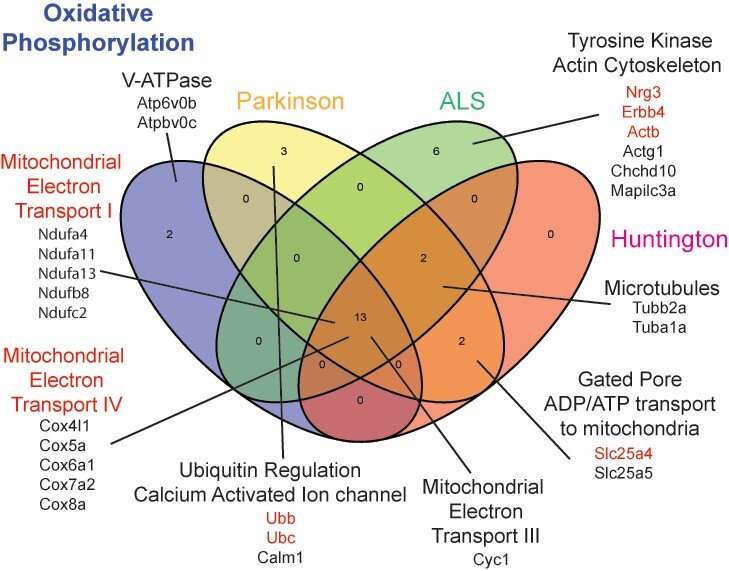The gene expression profile of the newly discovered class of inhibitory neurons indicates strong associations with neurological and neuropsychiatric diseases and high energy use. Credit: Dr. Xu-UCI School of Medicine
A University of California, Irvine-led team of researchers working at the Center for Neural Circuit Mapping find links between brain disorders and dysfunction of newly identified inhibitory brain cell types. The study "Anatomical and molecular characterization of parvalbumin cholecystokinin co-expressing inhibitory interneurons: implications for neuropsychiatric conditions" was published in July in Molecular Psychiatry.
Different types of brain inhibitory neurons were identified first over one hundred years ago by differences in their shape and form, but their functions are still being uncovered.
A team of UCI scientists led by Xiangmin Xu, Ph.D., professor of anatomy and neurobiology and director for the Center for Neural Circuit Mapping (CNCM) at the UCI School of Medicine, found that a distinct new class of brain inhibitory neurons when functioning abnormally may contribute to neurological and psychiatric conditions, including autism and schizophrenia.
"We've discovered a new class of inhibitory neurons in the brain that are implicated in several neuropsychiatric conditions," said Xu. "These neurons are characterized by their chemical signature of expressing calcium binding protein parvalbumin and the cholecystokinin (CCK) peptide."
The nervous system uses a balance of excitatory and inhibitory neurons that interact. Without inhibitory neurons, the brain experiences epilepsy, and other neurological disorders. The class of neurons that Dr. Xu's team discovered are very metabolically active and thus require high levels of energy.
"These key inhibitory neurons effectively act as a braking system of the brain to slow down overall activity," said Xu. "The loss of function of the braking system of the brain leads to abnormal function."
The team is now studying the very active types of neurons with high energy requirements for potential therapies. They are further examining these neurons to better understand their relationship to neuropsychiatric conditions and their contributions to brain function.
More information: Steven F. Grieco et al, Anatomical and molecular characterization of parvalbumin-cholecystokinin co-expressing inhibitory interneurons: implications for neuropsychiatric conditions, Molecular Psychiatry (2023). DOI: 10.1038/s41380-023-02153-5
Journal information: Molecular Psychiatry
Provided by University of California, Irvine
























